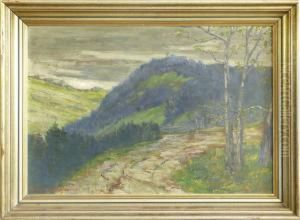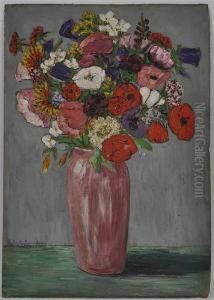Mathilde Von Freytag-Loringhoven Paintings
Baroness Elsa von Freytag-Loringhoven, born Else Hildegard Plötz, was a German-born avant-garde, Dadaist artist and poet who lived and worked in the United States for much of her career. Born on July 12, 1874, in Swinemünde, in what was then the German Empire (now Świnoujście, Poland), she had a tumultuous and poverty-stricken upbringing, which led to her early development as an unorthodox and rebellious spirit.
In 1901, she married August Endell, a Berlin-based art nouveau architect and designer, but their marriage ended in divorce. She then married a German translator, Felix Paul Greve, in 1907, who would later move to America and reinvent himself as the writer Frederick Philip Grove. Elsa moved to the United States in 1910, following Greve, who had abandoned her and emigrated there in 1909. Once in the US, she eventually settled in New York City, which was becoming a hub for avant-garde art.
In New York, she married the Baron Leopold von Freytag-Loringhoven. Her marriage entitled her to the title of 'Baroness,' which she incorporated into her persona as an artist. The Baroness became known for her audacious poetry, unconventional behavior, and an eccentric fashion sense that included wearing found objects and creating living art through her daily attire.
She was a contemporary of other Dada figures like Marcel Duchamp, Man Ray, and Francis Picabia, and her work was influential in the development of Dada in New York. Although much of her art has been lost or remained unpublished during her lifetime, her legacy includes her poetry and the provocative performance art that she practiced, which challenged conventional norms of sexuality, beauty, and society.
The Baroness struggled with poverty and mental health issues throughout her life. She returned to Berlin in 1923, where she lived in relative obscurity and continued to face financial hardships. Elsa von Freytag-Loringhoven died on December 14, 1927, in Paris, from asphyxiation due to a gas leak, which was suspected to be a suicide but was never confirmed as such.
Her contribution to the Dada movement and modern art has been reassessed and celebrated in more recent years, as scholars and the public have become more aware of her role as a pioneering feminist and avant-garde artist. Her work is seen as a precursor to later feminist art movements, and her life as a testament to the struggles and potential of women in the early 20th century avant-garde.

